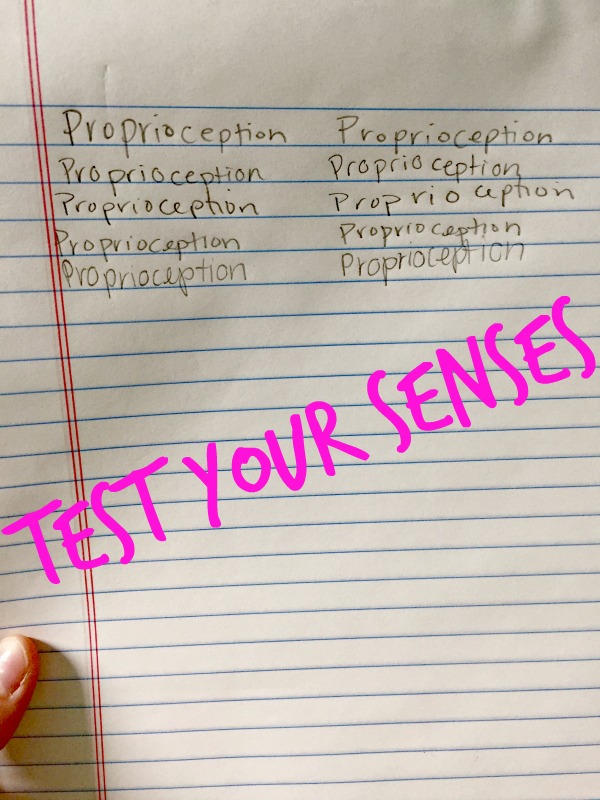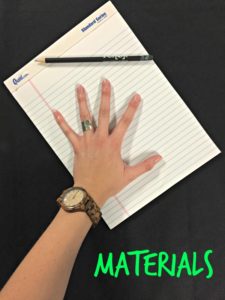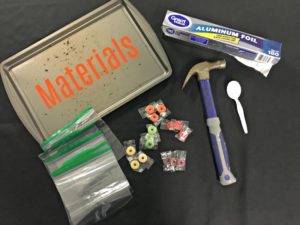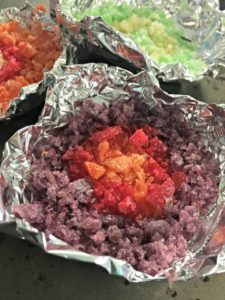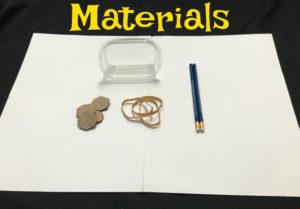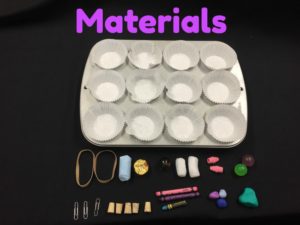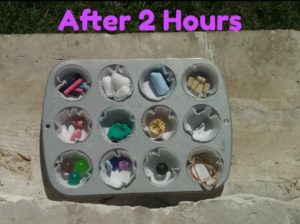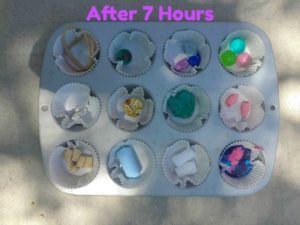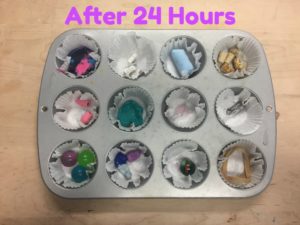Today’s activity doesn’t require a lot of materials, but it’s a great test for your senses! Our muscles, tendons, joints, and inner ear all contain what is called proprioceptors. These ‘stretch receptors’ help us know positional locations, which means that we have a sense of where our hands, fingers, and other body parts are in relation to the rest of our body and the environment around us. See how well your proprioceptors are working by completing a few simple tasks with your eyes shut.
Hands-On Wednesday: Agate Candy
Observe both a physical and a chemical reaction in this tasty experiment. You may have seen agate crystals used as a colorful home decorations, but it took many years for these rock formations to develop. Agate crystals are formed when microcrystals within a hollow pocket of a host rock begin self-organizing to form patterns. The colors and arrangements of the crystals are influenced by changes in temperature, pressure, and mineral content. Luckily, our experiment only requires a physical change by being crushed, a chemical change from the oven by being heated and melted, and it takes a lot less time to develop these crystals!
Hands-On Wednesday: Paddle Boats
We are nearing the end of summer, but it is still so much fun to play in the water! With this hands-on project, we created a paddle boat that is able speed through the water by using foam based propellers to drive it. By twisting the rubber bands attached to the propellers, you build up potential energy. When the propellers are released, the energy changes to kinetic and you get to watch your boat zoom away!
Hands-On Wednesday: What Can Beat the Heat?
Here in Texas, it is getting quite hot outside, so we chose to see what objects could beat the heat this week! Using a muffin tin, we added various objects we had leftover from Summer Camp to test. We made predictions about which objects would melt in the 90 to 100 degree weather we’re experiencing here, and after 24 hours, we found that the crayons and chocolate had melted completely! We know that every solid has a melting point — but only a few that we chose had melting points low enough that they couldn’t beat the Texas heat. Choose some objects around your house, and try this out at home!

